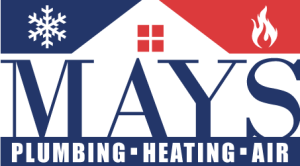Pipe Dreams: A Beginner’s Guide to Understanding and Maintaining Your Home Plumbing System
Plumbing problems are among the most dreaded aspects of home ownership.Leaks, drainage issues, and repair costs are enough to make any homeowner cringe. However, understanding your home’s plumbing system and maintaining it regularly can be less daunting than you might think.
Understanding Your Home’s Plumbing System
Plumbing is not just about relieving homes of wastewater, but also supplying fresh water for all kinds of uses – kitchen, bathroom, central heating, and many more. It’s a vast network of pipes, fixtures, valves, and fittings. It’s also about understanding two subsystems operating together: a water supply system and a drainage system. Let’s delve into these subsystems.
The Water Supply System
Everything begins with the water supply system. This high-pressure system is responsible for directing municipal water from the street to your home. Water enters your property through a water main, after passing through a meter that tracks usage. Once inside your home, water is distributed via a system of pipes to various outlets.
The Drainage System
The second core component is the drainage (or waste) system. This system responsibly carries off used water and waste to the sewer or septic tank. Unlike the high-pressure water supply system, it relies on gravity to work. Hence, all pipes in the drainage system should be angled downward. They’re also vented through pipes that protrude from the roof, allowing gases to escape and promoting airflow for correct drainage.
Pipes: The connecting threads
There are different types of pipes used within your home’s plumbing system – for supply, drain, and vent. The materials can vary widely, from copper, PVC, lead, cast iron to galvanized steel. Understanding which type of pipe is used where in your home will decide its repair and replacement requirements.
Maintaining Your Home’s Plumbing System
Maintaining your plumbing system isn’t about waiting for issues to arise and addressing them. It’s about preventing them from happening in the first place. Here are some essential maintenance tips that may prove helpful even if you’re a novice at plumbing.
Watch out for leaks
Spotting leaks early is a small step in maintenance that saves you from bigger issues down the line. *Always keep an eye on dripping faucets, leaking showerheads, damp cabinets, and rocking toilets.*
Ensure Your Drains are Clean
Clogged drains can lead to expensive repairs. Refrain from using chemical cleaners as they can corrode pipes. Instead, utilize a drain snake or a manual auger for small clogs. For recurring blockages, you may need a professional plumber.
Know Your Main Valve’s Location
Knowing the main water shut-off valve’s location can save your home from major water damage in the case of a burst pipe. It’s usually near the water meter. Being able to turn off the water supply until a professional arrives can potentially save you thousands of dollars in property damage.
Regularly Inspect Your Septic Tank or Sewer Line
Dealing with a septic backup or a sewer line issue can prove to be an expensive and messy situation. Regular inspection will help you prevent such problems. The frequency of septic tank pumping depends on its size and the household’s water usage, typically every three to five years.
Insulate Your Pipes
Insulating your pipes prevents them from freezing and splitting in colder months. Even if you live in a warmer climate, pipes can still freeze. You can use foam pipe insulation, which is easily available and simple to install.
Hire Experienced Professionals
If you’re unsure about maintaining your home’s plumbing system or if a problem seems overwhelming, it’s always a good idea to hire a professional. Remember, an ounce of prevention is indeed worth a pound of cure.
Wrapping Up
Your home’s plumbing system may feel like a complex web of pipes and components. But making an effort to understand it and proactively maintain it can save you from serious headaches and potentially thousands of dollars. “Pipe Dreams: A Beginner’s Guide to Understanding and Maintaining Your Home’s Plumbing System” is not just about dreams, it’s about turning them into manageable and achievable realities for every homeowner.




